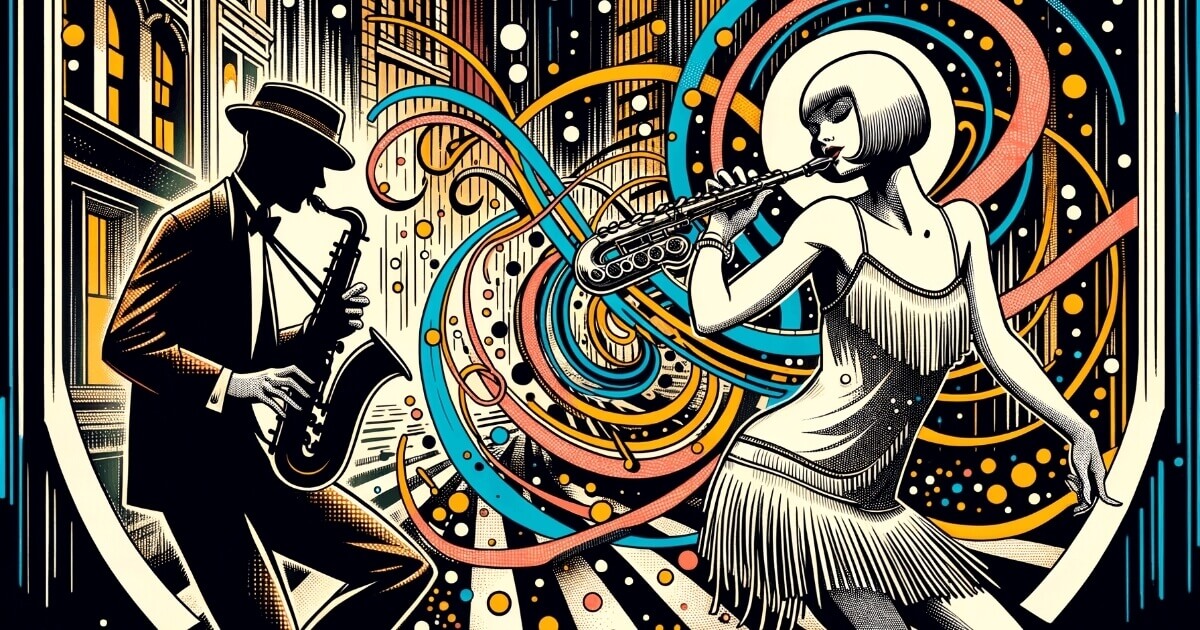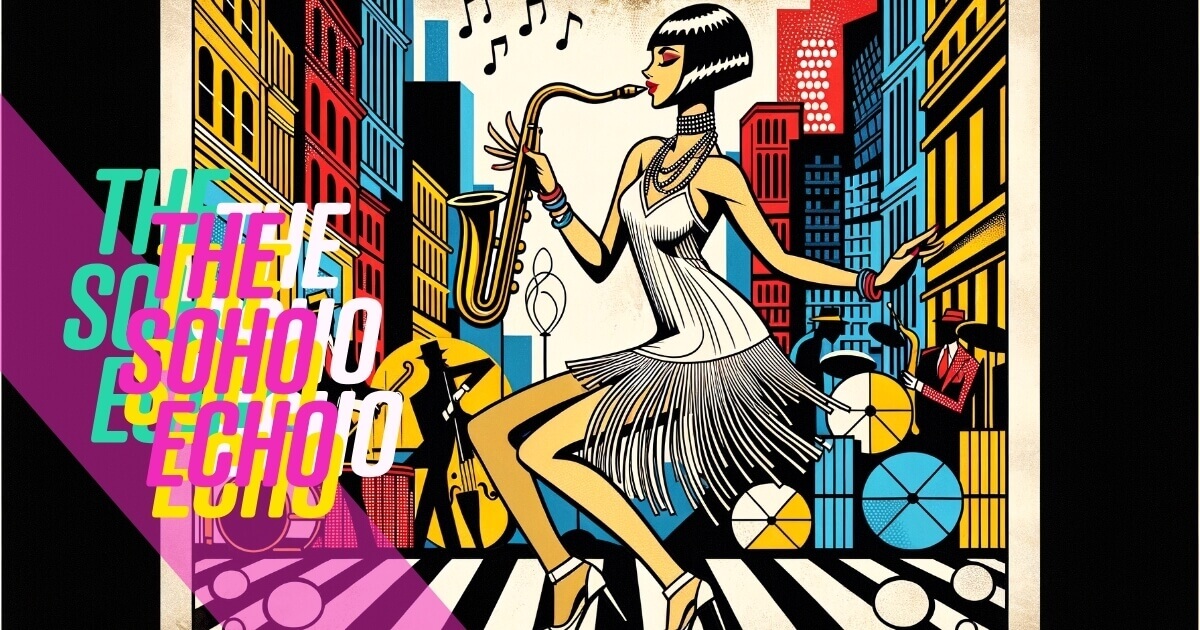Soho's Jazz Revolution: A Roaring 1920s Musical Awakening

Jazz Explosion (1920–1929)
In the vibrant heart of London, a musical revolution was brewing in the smoky back rooms and neon-lit clubs of Soho. It was the 1920s—a decade that would come to define not only an era of music but an entire cultural movement. As jazz seeped in from Harlem to Dean Street, nightclubs thrived like never before, and the very fabric of society began to change, blurring the lines of morality as Soho started swinging before the rest of London caught on. But what was it about this intoxicating genre that captivated the souls of Londoners and transformed the city’s nightlife?
Picture this: a dimly lit venue where the air is thick with anticipation, the sultry tones of a saxophone waft through the crowd, and the clinking of glasses punctuates the beat of a vibrant rhythm. This was the scene in Soho, where the jazz explosion not only provided a soundtrack to the decade but also served as a backdrop for a social awakening. From the legendary 43 Club, helmed by the indomitable Kate Meyrick, to the intimate settings of the Piano Bar Soho, this article delves into the electrifying atmosphere of jazz in Soho during the roaring twenties, exploring its artists, its venues, and its enduring legacy.
The Birth of Jazz in Soho: A Cultural Shift
As the 1920s dawned, jazz was not merely a musical genre; it was a cultural phenomenon that resonated with the restless spirits of a generation seeking freedom and expression. The Great War had left a profound impact on society, and as soldiers returned home, they brought with them not only tales of valor but also an insatiable desire for change. In Soho, the jazz scene offered a refuge where one could escape the constraints of the past and embrace a new, liberated way of life.
Nightclubs began to pop up across the district, each offering patrons a taste of the vibrant sounds that had flooded in from the United States. The 43 Club, one of the most iconic venues, became synonymous with the jazz craze. Meyrick, known for her glamorous flair and sharp wit, attracted the crème de la crème of the London elite, all eager to experience the excitement of jazz. It was a place where the boundaries of class and morality dissolved, where the mingling of different social strata created a unique melting pot of culture.
Jazz was not just about the music; it was a statement. It celebrated individuality and defied conventions. The rhythms were infectious, encouraging even the most reserved to tap their feet and sway their hips. It was a soundtrack for the flappers and the dapper gents, a tune for those who sought to break free from the rigidity of Victorian norms. The air buzzed with a newfound energy, and Soho became a playground for the bold and the adventurous.
The Artists Who Defined an Era
At the heart of the jazz explosion were the artists whose talents mesmerised audiences night after night. Musicians such as Louis Armstrong and Duke Ellington, though American, had a profound influence on the British jazz scene, their records spinning in homes and clubs alike. But it was the local talent that truly brought Soho to life, creating an eclectic sound that was distinctly British.
Among the notable performers was the legendary saxophonist and clarinetist, Sidney Bechet, whose passionate playing captivated listeners and set the standard for jazz musicians in London. His ability to convey emotion through his instrument was unparalleled, and audiences would flock to hear him weave his magic on stage.
The era also witnessed the rise of female jazz musicians, a bold move in a male-dominated industry. The likes of Ivy Benson, who led her own all-female band, challenged societal norms and paved the way for future generations of women in music. Their performances were not only musically exceptional but also a powerful statement of empowerment and independence.
As the decade progressed, the venues that showcased these artists became just as famous as the musicians themselves. The Flamingo Club and the 100 Club emerged as quintessential spots for jazz enthusiasts, offering not just music but an experience, a vibrant atmosphere that transported patrons into a world of rhythm and soul.
The Nightlife Scene: Jazz Clubs and Their Influence
Soho’s nightlife in the 1920s was a kaleidoscope of sights and sounds, where the smoky haze of jazz clubs mingled with the laughter and chatter of patrons. Each venue had its own unique charm, drawing in crowds eager to immerse themselves in the sultry ambiance of live music.
The 43 Club, with its opulent décor and electric vibe, was the jewel in Soho’s crown. It was here that jazz lovers gathered to witness unforgettable performances and indulge in the thrill of the night. The walls of the club echoed with tales of wild nights and spontaneous jam sessions, where the music flowed as freely as the champagne.
Not far away, the Piano Bar Soho emerged as another hotspot, offering an intimate setting for those seeking a more personal experience with the music. The talented pianists who graced its stage were known for their improvisation skills, turning each performance into a unique and memorable event. Patrons would often join in, singing along to popular tunes, creating a sense of community that was palpable.
These venues were not just places to listen to music; they were cultural hubs where creativity flourished. The jazz clubs of Soho became a breeding ground for new talent, a place where aspiring musicians could hone their craft and share the stage with established stars. It was a vibrant ecosystem that nurtured the arts and fostered a sense of belonging among its patrons.
The Social Fabric of Jazz: Blurring Morals and Class
As jazz swept through the streets of Soho, it began to challenge the very essence of British society. The music was a celebration of freedom, but it also stirred conversations about morality and class structures. In a time when the country was still grappling with the aftershocks of the war, jazz offered a stark contrast to the conservatism that had dominated the previous decades.
The nightlife in Soho became a reflection of this cultural shift. Class distinctions began to blur as people from different backgrounds came together to enjoy the music. The jazz clubs became a sanctuary for those who sought to escape the constraints of their social standing. Here, a wealthy aristocrat could share a drink with a working-class musician, united by their love for the music.
However, this newfound freedom did not come without its challenges. The jazz scene often faced criticism from traditionalists who viewed it as a threat to the moral fabric of society. The bohemian lifestyle of the jazz musicians, with its late nights and liberating spirit, raised eyebrows among the more conservative elements of society. Yet, the allure of jazz was too powerful to resist, and its influence continued to grow.
The emergence of jazz also coincided with the rise of the flapper culture, where young women embraced a new sense of independence and freedom. They danced the night away in speakeasies, donning their bobbed hair and fringed dresses, embodying the spirit of the age. The jazz clubs became a space for self-expression, where individuals could explore their identities and challenge societal norms.
Lasting Legacies: The Enduring Impact of Jazz on Soho
As the decade came to a close, the jazz explosion of the 1920s left an indelible mark on Soho and beyond. The clubs that had flourished during this time continued to serve as platforms for emerging talent, ensuring that the spirit of jazz lived on. Even today, venues like the Piano Bar Soho and the 100 Club celebrate the legacy of this musical movement, drawing in crowds eager to experience the magic of live jazz.
The influence of jazz extended far beyond the confines of the clubs; it seeped into the very fabric of British culture. The improvisational nature of jazz inspired countless musicians across genres, fostering a spirit of creativity and innovation that continues to resonate in today’s music scene. From rock and pop to contemporary jazz, the echoes of the 1920s can still be heard in the melodies that fill the air.
Moreover, the jazz clubs of Soho remain a testament to the power of music as a unifying force. They are reminders of a time when societal barriers were challenged, and the joy of self-expression reigned supreme. As contemporary musicians take to the stage, they stand on the shoulders of giants, drawing inspiration from the rich history that Soho has to offer.
In a world that often feels divided, the jazz clubs of Soho invite us to come together, to celebrate music, and to embrace the vibrant tapestry of culture that defines our community. Whether you’re a seasoned jazz aficionado or a newcomer eager to explore, there’s a place for you within its walls. So, grab your friends, head out to your local jazz club, and immerse yourself in the rhythm of Soho. Let the music guide you, and who knows? You might just find yourself partaking in a new chapter of this ongoing jazz explosion.
